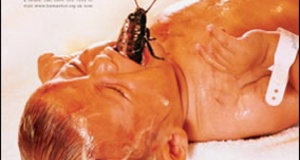From Elon Journal of Undergraduate Research in Communications VOL. 6 NO. 2An Analysis of Successful Student-Run Public Relations and Advertising Agencies
By
Elon Journal of Undergraduate Research in Communications 2015, Vol. 6 No. 2 | pg. 1/1 AbstractLike other communication-related fields, such as broadcast journalism and print journalism that typically have their own student-led organizations, strategic communications students obtain hands-on experience through student-run agencies, which helps them secure internships and jobs after graduation. This study examined what factors are critical to the success of college student-run agencies, based on a survey sent to university student-run PR and advertising agencies nationwide. The survey identified three major trends that were related to successful agencies. I. IntroductionAcross the nation, student enrollment in journalism and mass communication programs has continued to rise in recent years (Becker, Vlad, Tucker, and Pelton, 2006). Notably, enrollment in strategic communications has experienced a significant increase in recent years. Correspondingly, the majority of strategic communications students at Elon University, and those in similar majors at other schools, work at communications agencies after they graduate. While internships can prepare students for work in an agency, most internships are hard to get without prior experience. Like other communication-related fields, such as broadcast journalism and print journalism that typically have their own student-led organizations, strategic communications students obtain hands-on experience through student-run agencies, which helps them secure internships and jobs after graduation. While student-run agencies have the same goal of preparing students for internships and work after graduation, they are all run very differently. Some work with only on-campus clients, while others work with Fortune 500 companies; some are run from classrooms, while others in their own space; and some operate on a semester-long schedule, while others are run yearly. It is important for educators and students to understand what kind of agencies will offer the best preparation for students. Thus, this research paper examined only student-run agencies that prepare students for internships and work after graduation. While Bush and Miller's 2011 study found failed agencies that folded within a year had no formal business practices or structure, and did not prepare students for internships or post-graduation employment, the current study found that all the student-run agencies reviewed were successful in preparing students for future work. II. Literature ReviewIt's only in the past decade and a half that research began to be published on student-run public relations or advertising agencies. Bush (2009) wrote a seminal paper, which sparked an additional study by Swanson (2011). These two articles as well as other articles dealt with the effect of extracurricular activities on student success, how to start a student-run public relations agency, and university-level public relations education. Described below are the three themes that emerged from the literature: 1) benefits that come with student involvement in extracurricular activities, 2) the purpose of student-run agencies, and 3) how studentrun agencies are different from internships or in-class learning. Benefits of Student Involvement in Extracurricular ActivitiesStudent involvement outside of the classroom is crucial to student growth. A study in the Journal of Student Affairs Research and Practice found that involvement in clubs and organizations is essential to the psychological development of students throughout their college careers (Fourbert and Urbanski, 2006). According to this study, students at a midsized public university had consistently higher developmental scores when they were involved on campus than when they were not. Not surprisingly, those who joined or led organizations garnered even higher developmental scores than those who just attended meetings (Fourbert and Urbanski, 2006). Similarly, another study, "Student Involvement: A Developmental Theory for Higher Education" that was published in the Junior of College Student Development, found that student involvement is key to students developmental success (Astin, 1984). Notably, it found that holding a part-time job on campus was one of the most important factors to developmental achievement in university students (Astin, 1984). Most student-run agencies would be considered as a part-time on-campus job because they do not require the hours of a full-time position (which was found to harm a student's developmental success) and are located on or close to university campuses. Further, research showed that students benefit from involvement in extracurricular activities prior to attending college, particularly media-related ones like student-run agencies. A study published in the Journalism and Mass Communication Quarterly found that journalism activities in high school were key to the initial success of students in the job market (Becker et al., 2014). Purpose of Student-Run AgenciesThe Public Relations Student Society of America (PRSSA), which is affiliated with more than 100 student-run agencies across the country, indicated in "The Report of the Commission on Public Relations Education" that professional and pre-professional organizations are "the link between the classroom and their first jobs" (Turk, 2006). In particular, according to the report, student-run firms "allow students to work in groups to tackle real problems and opportunities for local clients" (Turk, 2006). In a handbook for its student-run firms, PRSSA also lists the advantages of working at a student-run firm, such as building client relationships and meeting professionals, learning how to lead and work as a team, creating resume and portfolio material, getting hands-on public relations experience, learning how to balance tasks and handle numerous duties, and applying theories learned in the classroom (PRSSA, 2014). Bush (2009) found that one of the biggest benefits of student-run agencies is applied learning. While students learn about media pitching, strategic writing, event planning and other similar skills in class, it is in the tactical application of them that students learn the most. Bush also determined that student-run agencies aid the development of students' professional identities through the activities of creating resume and portfolio material. She mentioned higher level benefits, such as learning essential leadership and management skills, increasing professional confidence, motivating employees, and negotiating with clients (Bush 2009). Lastly, Bush's study (2009) echoed PRSSA's findings that hands-on experience at student-run agencies led to student internships and greater job opportunities. This is consistent with another study that found that high school journalism activities were key to the initial success of students in the job market (Becker, Han, Wilcox & Vlad, 2014). Lastly, the article "The Student-Run Public Relations Firm in an Undergraduate Program: Reaching Learning and Professional Goals through ‘Real World' Experience" pointed out "real world" experience as the primary outcome of student-run agencies (Swanson, 2011). The study found that agencies improved students' ability to work in teams and develop a professional portfolio, two of PRSSA's goals. Swanson also mentioned a new finding that student-run firms provide staff with a great internal source of networking for internship and job opportunities (Swanson, 2011). Student-Run Firms Differentiated from Internships or University ClassesUniversity classroom learning was differentiated from student-run firms that offer students application of class theory and concepts by numerous studies, such as "The Report of the Commission on Public Relations Education" (Turk, 2006), "Student Public Relations Agencies: A Qualitative Study of the Pedagogical Benefits, Risks, and a Framework for Success" (Bush, 2009), and the PRSSA Student-Run Agency Handbook (PRSSA, 2014). Student-run agencies provide students with the application of classroom learning, development of professional skills, and opportunity to learn business processes, which are some of the "most difficult to teach in a traditional classroom setting" (Bush & Miller, 2011). Thus, Bush and Miller (2011) suggested that student agencies may fill a gap in the curriculum. Additionally, student-run agencies differ from classroom learning even in client-based classes, such as capstone courses, because students are not taken as seriously as they are in agency settings and thus are not provided the same level of external motivation (Bush, 2009). Regarding internships, Bush (2009) found that they are invaluable in applying classroom theory and impacting students' career choice. Since employers expect students to know professional skills before interning, (Bush, 2009) these skills should be acquired beforehand. Internship site managers pointed out a higher degree of professionalism as an area public relations faculty need to develop in their curriculum, as well as better writing skills. A student-run agency provides a safe and welcome environment to practice these skills, especially professionalism because it "is like a sport; one gets better as he/she does it" (Brown & Fall, 2005). Additionally, Neff's study (qtd. in Bush, "Student" 32) found that internships are more task-oriented than process-driven, preparing students less fully than student-run firms for real-world job experience. III. MethodsThree search terms were used to identify student-run agencies: "student-run public relations agency," "student-run advertising agency," and "university-run public relations and advertising agencies." These terms were selected based on a literature review that suggested that student-run agencies were using these terms to describe themselves. Although the Public Relations Student Society of America (PRSSA) publishes a list of student-run agencies, this list was not used solely because PRSSA-affiliated agencies are likely to be similarly structured and are not representative of student-run agencies as a whole. After the three-term search, the author checked the first 10 pages of search results to compile a total of 37 student-run agencies. Each agency's website was examined to find its activities in relation to its clients and social media pages and determine if the organization met the definition of success as previously defined in this paper. A message was sent to the resulting final list of 29 student-run agencies that explained the context of the project and a link to a ten-question survey on surveymonkey.com. The survey was modeled after Bush and Miller's study (2011) with one difference: This study contacted student staff at each student-run agency, while Bush and Miller looked at the issue through the eyes of agency faculty. The survey had the following research questions:
The author received nine responses1 (32% response rate ) over the 10-day survey period. IV. FindingsSince this study's results overall echoed the 2011 Bush and Miller study, the author described findings in comparison with the latter study, before discussing three identified trends and their implications. Agencies Integrating Public Relations, Advertising or BothThe majority of respondents (56% of nine respondents) indicated that their student-run agency integrated both public relations and advertising. This is consistent with Bush and Miller's study (2011), which found the integration level of 51%. In this study, 44% of respondents identified themselves as primarily public relations agencies compared to 34% in Bush and Miller's study. None of the respondents in this study identified themselves as primarily an advertising agency, compared to 9% in Bush and Miller's study. Course CreditThe responding schools were almost evenly split between those that offer course credit and those that do not. In this study, 56% of survey respondents reported course credit for working at their student-run agency, while Bush and Miller (2011) found 49%. This study found that whether agencies offered course credit made no difference in terms of the services offered, structure of the agency or business protocols. Connection to UniversityAccording to this study, 33% of agencies were affiliated directly with a student organization, such as PRSSA or the American Advertising Federation (AAF); 33% were run by a university communications or journalism department; 22% were completely independent of the university, and 11% were part of a practicum class. On the other hand, Bush and Miller's study found that more than half of student-run agencies were affiliated with a department at the university, while the remaining 40% were affiliated with student-run organizations like PRSSA. Although small sample size prohibits generalization to a larger population, it is possible that studentrun agencies have become increasingly independent of their universities, which gives them greater freedom to produce their own work and operate without restraints from their institutions. Tipping the balance toward student agencies' affiliation with student-run organizations may be attributed to PRSSA's assistance in creation of student-run agencies over the past four years. WorkspaceIn the 2011 Bush and Miller study, only 38% of respondents indicated that they had their own workspace, while 28% shared their workspace with another student group and 34% had no dedicated workspace. This study saw progress in this area with the corresponding percentages of 75%, 12.5%, and 12.5%, respectively. Bush and Miller found that one of the most important assets to student-run agency success is an independent, dedicated workspace. Their study directly ascribed independent workspace to greater skills application, better understanding of business processes, and greater professional skills. The importance of independent workspace to the success of a student-run agency was recognized in this study by at least one of the respondents, who wrote, "The most important one is DEDICATED SPACE . . . . Without dedicated space, the agency will fail." Business PracticesAs shown in Table 1, this study found that student agencies required or offered the following common business practices: client contacts (100%), time sheets (89%), weekly agency meetings (89%), and client invoicing (78%). In Bush and Miller's study (2011), weekly agency meetings (90%), staff orientation sessions (77%), client contracts (77%), and formal job descriptions (73%) were some of the most common business practices. On the other hand, this study found less than a half of agencies adopted the following business practices: a competitive application process (22%), client report templates (44%), and required office hours (44%). In Bush and Miller's study, less popular business processes were required office hours (33%), a dress code (32%), billable hours (39%), client planning templates (48%), and time sheets (47%). Two studies showed a significant difference in some business processes. For example, more than 20 percentage point difference was found in the area of times sheet (42%) and dress code (35%). Notes: N.A. indicates data that were not available because the survey did not ask respondents about the three business practices. Management StructuresAll survey respondents in this study indicated that they had account team leaders and faculty advisors. A majority of them had a student director (89%), less than half with a creative team (44%), and only 22% with a new business director. These findings are similar to what Bush and Miller found, such as a very high percentage of student-run agencies with a faculty advisor (100%), account team leaders (90%) and a student agency director (92%), and a low level of a creative team (40%) or new business director (46%). PaymentThis study found that not a single student-run agency paid all of its staff, but more than half (56%) paid no staff at all, while some paid only their student leadership team (33%). These findings are similar to what Bush and Miller found: one-third (33%) of student-run agencies paid some of their staff. This study found that a little more than half of survey respondents (56%) indicated that their clients paid for their services in this study in comparison with 51% in Bush and Miller's study. Years In ExistenceThe concept of student-run public relations/advertising agencies was a new area of research when Bush and Miller (2011) found that only about half (51%) of agencies surveyed had existed for over four years. The current study found that every student-run agency that responded to the survey had existed for at least four years and one-third of the agencies had existed for more than ten years. Services OfferedMany respondents in this study indicated that their agencies offered services like social media (100%), press releases (100%), event management (89%), full campaigns (89%), logo development (89%), graphic design (89%), website development (89%) and newsletters (89%) (see Figure 1). These were similar to Bush and Miller's 2011 fi ndings of popular services that student-run agencies offered. In the current study, less popular services were also offered, including broadcast commercials (22%), blogging (56%), video production (67%) and print advertising (67%). Bush and Miller (2011) also found a low level of activities in video production (67%) and broadcast commercials (22%), services that are typically offered by agencies with a creative team. This low level can be explained by the lack of creative teams. This study found that only 44% of agencies had a creative team, while Bush and Mill found 40%. No question was asked about research activities in this study; however, three of the nine respondents wrote "research" when asked to specify if they offered other services outside the list of services they could choose from in the survey. When asked to list what they believed made their student-run agency successful, seven (78%) responded with a variety of answers, including using professional equipment, keeping the staff size between 50 and 60 students, entering professional contests, continued education from guest speakers, partnering with a great PRSSA chapter, and a supportive journalism school. Respondents also mentioned dedicated space, just as Bush and Miller found in their study. Other factors mentioned as crucial to the agency's success included finding passionate students to work at the firm, a dedicated leadership team that works cohesively, and a dedicated faculty advisor with real-world agency experience. V. AnalysisAnalysis of the survey results identified three major trends: independent workspaces fostered a greater number of formal business practices; agencies affiliated with PRSSA had been in existence the longest probably because of the guidance and support they received; and agencies with paying clients were more targeted in their offered services. Similar to Bush and Miller (2011), this study found that independent workspaces were related to how well agency staff perceived their agencies prepare them for future success. However, surprisingly, no significant quantitative difference was detected between student-run agencies with a workspace and those without in terms of services offered, except for some business processes, such as a dress code, a competitive application process and client contracts. Agencies with an independent workspace offered 9 business processes out of 12 on average, 1.5 higher than their counterparts, which offered only 7.5 business processes on average. This study found that agencies, when they were affiliated with PRSSA or other student-run organizations, had been in existence the longest for an average of fifteen years, followed by agencies associated with a university department with six and a half years, and those completely independent of the university with five years. The longevity of agencies in the first category may be attributed to PRSSA, which provides student-run agencies with a plethora of materials that help an agency with sample client contracts, sample leadership structures, and information on how to find and pitch clients. An interesting finding was that student-run agencies that had paying clients offered 9.4 services on average, a smaller number of services in comparison to agencies without paying clients, which offered 11.5 services. This discrepancy might occur because agencies without paying clients tend to be much less specialized in the scope of their services than their counterparts. For example, agencies without paying clients may be willing to delve into projects even when they do not have much experience, while agencies with paying clients would feel that the work they do must be of the highest quality and do not choose to offer services that they cannot produce on a professional level. LimitationsThe greatest limitation of this study was sample size. Due to time constraints, the sample size was only nine, not a large enough number of agencies to generalize. Additionally, the study was limited to studentrun agencies that were identified using three search terms on Google.com. Agencies that did not use these terms to describe themselves on their website were not sampled. Due to the method of selecting agencies based on the three terms, the resulting agencies were not a simple random sample. Further research should include formal interviews with faculty advisors and students who work at student-run agencies to discover best practices for student-run agencies and compare the performance of two groups in workplace after graduation: students who had the opportunity to work at student-run agencies and those who did not. VI. ConclusionThis study analysed nine successful student-run public relations and advertising agencies nationwide and their responses to questions adapted from Bush and Miller's 2011 study. All the agencies in this study met the main goal of student-run agencies, which is to prepare students for internships and work after graduation. Based on this analysis, the author identified three major trends of successful agencies: independent workspaces fostered a greater number of formal business practices; agencies affiliated with PRSSA had been in existence the longest probably because of the their guidance and support; and agencies with paying clients were more targeted in their offered services than those without. AcknowledgmentsThis author is thankful to George Padgett, associate professor of communications at Elon University, for his supervision and advice, without which the article could not be published. The author also appreciates numerous reviewers who have helped revise this article. AuthorAmanda Limoges, Strategic Communications, Elon University ReferencesAstin, Alexander W. " Student involvement: A developmental theory for higher education." Journal of College Student Development 40.5 (1999): 518. Bush, Lee, and Barbara A. Miller. "U.S. Student-run Agencies: Organization, Attributes and Adviser Perceptions of Student Learning Outcomes." Public Relations Review 37.5 (2011): 485-91. Bush, Lee. "Student Public Relations Agencies: A Qualitative Study of the Pedagogical Benefits, Risks, and a Framework for Success." Journalism and Mass Communication Educator 64.1 (2009): 27-38. Becker, Lee B., Tudor Vlad, Maria Tucker, and Renee Pelton. "Enrollment Growth Rate Continues, But at Reduced Rate." Journalism & Mass Communication Educator 60.3 (2005): 286-314. Brown, Ashley, and Lisa Fall. "Using the Port of Entry Report as a Benchmark: Survey Results of On-the-job Training among Public Relations Internship Site Managers." Public Relations Review 31.2 (2005): 301-04. Foubert, John D., and Lauren A. Urbanski. "Effects of Involvement in Clubs and Organizations on the Psychosocial Development of First-Year and Senior College Students." Journal of Student Affairs Research and Practice 43.1 (2006): 166-82. Swanson, Douglas J. "The Student-Run Public Relations Firm in an Undergraduate Program: Reaching Learning and Professional Development Goals Through ‘Real World' Experience." Public Relations Review 37.5 (2011): 499-505. Public Relations Student Society of America (PRSSA). Student Run Handbook 2014-2015. Rep. n.p.: PRSA, 2014. Public Relations Student Society of America Turk, Judy VanSlyke. The Professional Bond: The Report of the Commission on Public Relations Education. Rep. n.p.: PRSA, 2006. Suggested Reading from Inquiries Journal
Inquiries Journal provides undergraduate and graduate students around the world a platform for the wide dissemination of academic work over a range of core disciplines. Representing the work of students from hundreds of institutions around the globe, Inquiries Journal's large database of academic articles is completely free. Learn more | Blog | Submit Latest in Business & Communications |





















